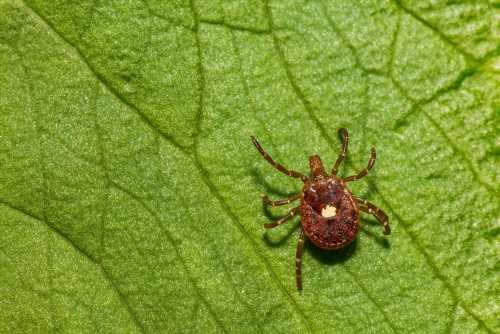Active transmission of Bourbon virus in New York
A recent study published in Emerging Infectious Diseases reported on the bourbon virus (BRBV) transmission in New York.

Background
BRBV of the Thogotvirus genus under the Orthomyxoviridae family is suspected to be tick-borne that was first isolated from a resident of Bourbon County in the United States (US). Human cases of BRBV were identified in Missouri, Oklahoma, and Kansas. BRBV is a close relative of the Oz virus isolated in Japan from a tick species (Amblyomma testudinarium). The lone star tick (A. americanum) has been identified as a likely BRBV vector. Ground-dwelling birds and small mammals serve as hosts for immature ticks. In contrast, large mammals like white-tailed deer and coyotes are hosts for adult ticks.
The study and findings
In the present study, researchers tracked BRBV transmission in New York, US. In July 2019, the epidemiologists of the New York State Department of Health (NYSDOH) were notified about the detection of BRBV RNA in a resident of Long Island, New York, with a partially engorged lone star tick removed from that individual.
The person experienced fever, fatigue, and chills. The tick was also positive for a bacterium (Ehrlichia ewingii), according to the comprehensive TickReport service. The individual’s blood samples were unavailable, and as such, it was unclear whether the reported symptoms were due to BBRV infection, bacteria, or an unrelated etiology.
The Suffolk County Department of Health Services and NYSDOH started active tick surveillance for the Heartland virus (HRTV) and BRBV, targeting lone star ticks. The researchers implemented a standardized method of flag sampling for collecting lone star ticks from Suffolk County. Between 2016 and 2020, 1,265 tick pools tested negative for BBRV by reverse-transcription polymerase chain reaction (RT-PCR).
Sampling was expanded in 2021 to collect more ticks from additional locations. The authors modified detection protocols to use primers designed for BBRV based on the original strain. In total, the researchers collected 1,058 tick pools from 12 sites in the County. BBRV RNA was present in five pools comprising unengorged nymphs, and the infectious viral particles were isolated from positive pools after incubating in Vero cells.
RT-PCR was performed for confirmation that isolated viral particles were BBRV. Serologic testing of white-tailed deer blood for arbovirus was initiated in 2007 in New York. BBRV was included in this program beginning in 2019 for deer blood harvested in Hudson Valley Region and Suffolk County and from 2020 for samples harvested in western and central New York.
The research team tested 881 serum samples for neutralizing antibodies (nAbs) against BBRV, and positive specimens were serially diluted for endpoint titers. Around 37% of deer in the state were seropositive, with nearly 90% of seropositive animals having titers above 20. The seropositivity for deer in Suffolk County was estimated at 66.5%.
Besides, seroprevalence was low in other tested regions, with 1.2% in central New York, 1.7% in Hudson Valley, and 3.8% in western New York. nAbs against BBRV were not present in seven deer from northern New York. Moreover, BBRV was not detected in lone star ticks from 145 deer harvested in Suffolk County.
Conclusions
In summary, BRBV isolation from local ticks and the high seropositivity in deer indicate an active transmission in Suffolk County since 2019. The lone star ticks were implicated in BBRV transmission, concordant with prior studies. Notably, the researchers did not detect BBRV in adult ticks during the surveillance period. BBRV seroprevalence rate in the white-tailed deer population in Suffolk County was comparable to that of the Oz virus in wild sika deer in Japan.
These findings highlight the need to include BBRV, HRTV, and other emergent pathogens in surveillance programs in areas with lone star ticks. Diagnosing BBRV infection is difficult, given the overlap between symptomologies of BBRV and other tick-borne infections. Therefore, healthcare providers should request HRTV and BBRV testing for individuals exposed to ticks or for those with a travel history to areas where lone star ticks are distributed and show clinical symptoms that are unresponsive to anti-microbial treatment.
-
Dupuis II AP, Prusinski MA, O’Connor C, Maffei JG, Koetzner CA, Zembsch TE, et al. Bourbon virus transmission, New York State. Emerg Infect Dis. 2023. doi: https://doi.org/10.3201/eid2901.220283 https://wwwnc.cdc.gov/eid/article/29/1/22-0283_article
Posted in: Medical Science News | Medical Research News | Disease/Infection News
Tags: Antibodies, Arbovirus, Bacteria, Blood, Fatigue, Fever, Healthcare, Heartland Virus, Infectious Diseases, Lone Star Tick, Polymerase, Polymerase Chain Reaction, Research, RNA, Transcription, Virus

Written by
Tarun Sai Lomte
Tarun is a writer based in Hyderabad, India. He has a Master’s degree in Biotechnology from the University of Hyderabad and is enthusiastic about scientific research. He enjoys reading research papers and literature reviews and is passionate about writing.
Source: Read Full Article



